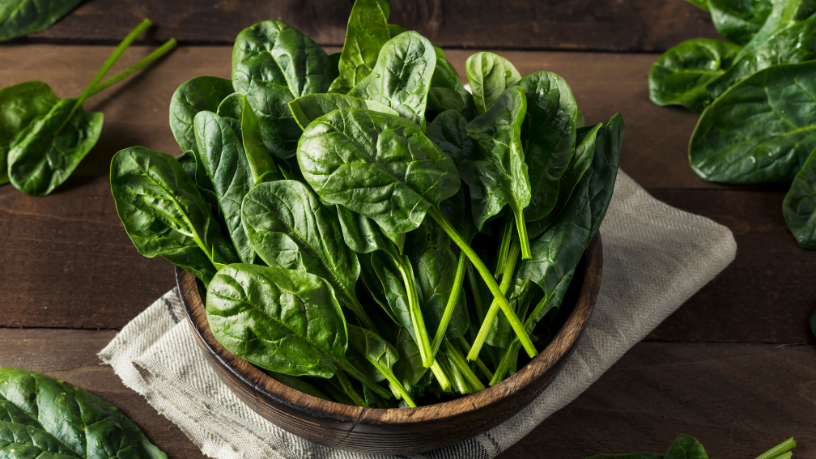The spinach eating habit is going viral on TikTok in March 2025 with users stuffing their mouths with raw leaves first thing in the morning. The promise is that the spinach eating habit helps reduce cravings for salty and sweet foods throughout the day, retraining the palate to healthier choices. Experts recognize the nutritional benefits of spinach but warn that there is no solid scientific evidence for this specific claim. Even so, the movement is encouraging more people to include vegetables in their routine, something that nutritionists celebrate. The spinach eating habit has gained traction for its simplicity and visual appeal on social media. This trend reflects the power of social media to shape eating behaviors.
Spinach is a nutrient-rich food, which explains part of the enthusiasm for the spinach eating habit. Packed with vitamin K, iron and antioxidants, it contributes to bone health and can even help control hunger thanks to its fiber. Eating spinach in the morning may be a step toward meeting the U.S. recommendation of 2 to 4 cups of vegetables per day. But gulping down large amounts at once isn’t necessary to reap these benefits. Nutritionists suggest incorporating it into smoothies or meals throughout the day for convenience. The focus on spinach eating highlights how small changes can impact a diet.
The lack of scientific support is a crucial point when analyzing spinach as a health hack. Studies have not shown that eating raw spinach in large bites in the morning directly alters taste preferences. Eating spinach may have general benefits because it’s a nutritious vegetable, but the idea of refining your taste buds seems more myth than fact. Experts like Julia Zumpano of the Cleveland Clinic emphasize that the important thing is to consistently increase your vegetable intake. The hype around spinach eating may be more motivational than functional. Still, it inspires positive eating habits.
Spinach eating also raises questions about balance and food safety. Although rare, eating too much raw spinach can be risky due to oxalates that bind to calcium and can aggravate kidney stones in susceptible individuals. Eating large amounts of spinach can also interfere with medications such as blood thinners because of its vitamin K. Cooking spinach reduces oxalates, making it a safer option for some. These precautions show that eating spinach requires moderation and awareness. Its popularity on social media does not eliminate the need for individual adaptation.
The simplicity of eating spinach is one of the reasons for its success on digital platforms. Unlike complex diets or expensive supplements, it only requires a handful of fresh leaves, something accessible to many. The habit of eating spinach aligns with the desire for quick and visible solutions that dominate TikTok. Before-and-after videos reinforce the narrative of transformation even without concrete evidence. This visual appeal drives the habit of eating spinach among young people seeking instant health. The trend proves that presentation matters as much as content.
Compared to other food fads, the habit of eating spinach stands out for its focus on a natural food. Unlike extreme fasting or restrictive diets, it promotes the inclusion of vegetables, something that nutritionists approve of. The habit of eating spinach may not fulfill all its promises, but it opens the door to a greener diet. Experts suggest combining it with peppers or broccoli for greater nutritional variety. This approach makes the habit of eating spinach a starting point for balanced diets. The trend has the potential to evolve into something more sustainable.
The cultural impact of the habit of eating spinach reflects a change in the perception of vegetables. Previously seen as an obligation, they now gain star status in viral videos. The habit of eating spinach transforms spinach into a symbol of accessible and uncomplicated well-being. This popularity can inspire other creative ideas for consuming vegetables besides spinach. Digital word of mouth amplifies the habit of eating spinach, showing how health has become a trend among younger people. In the long term, this can influence generations to prioritize natural foods.
Finally, the habit of eating spinach is an example of how social media is shaping food choices in 2025. Although claims of restricting taste buds are unfounded, the habit of eating spinach encourages a positive view of vegetables. Its success depends less on science and more on the engagement it generates online. For those who want to join the habit, the ideal is to integrate spinach into their routine in a practical and safe way. The habit of eating spinach may not be it’s the miracle cure it promises, but it’s a step towards a healthier life. The trend is here to stay as it inspires new wellness hacks.
Author: Eura Tymal
Source: Assessoria de Comunicação da Saftec Digital







